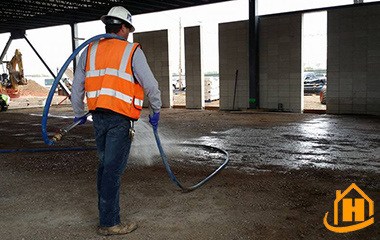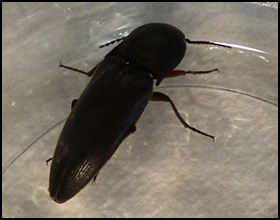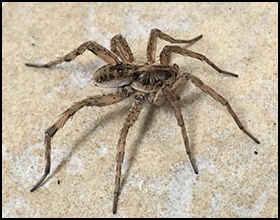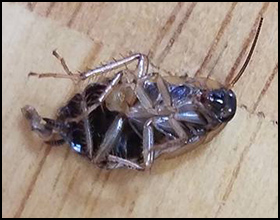Home Pest Control of Houston
Welcome to Home Pest Control of Houston! We are Texas pest control specialists. We offer both residential and commercial extermination services in Houston. We handle all common pest insects in the area, including: Termites, Ants, Bed Bugs, Cockroaches, Spiders, Palmetto Bugs, Mosquitos, Silverfish, Centipedes, Millipedes, Carpenter Bees, Dust Mites, Spider Mites, Fleas, Lady Bugs, Drain Flies, Indian Meal Moths, Yellow Jackets, Brown Recluse Spiders, Black Widow Spiders, Ticks, Pillbugs, Earwigs, and rodents such as rats and mice. We offer a range of affordable pest management services, including complete interior coverage of your home or building, and complete exterior coverage of your house and lawn. We pride ourselves on our polite and courteous customer service and our excellent results. Give us a call any time to find out more about our prices for pest control work and to schedule an appointment, usually within the next day. We look forward to hearing from you.

Residential / Commercial

Complete Insect Extermination

Property Services
Call 24/7 to discuss your pest problem.
Same-day or next-day appointments.
32-point inspection of your property.
Written estimates for pest project.
Fully state licensed and insured.
Complete Bed Bug treatment and removal.
Complete termite tenting and erradication.
Control of ants, spiders, stinging insects.
100% permanent rat and mouse control.
Quarterly and monthly maintenance programs.
Our Service Range - 281-378-3744



How Termites Reproduce
If you've ever encountered a termite worker in its nest, you probably though that it was on its larva stage. They will not have the tough exoskeleton that protects the body of most insects. They appear soft and fragile. Termites will look like larvae since most of them are larvae. In fact, the only mature species inside the nest would be the king and the queen termites. Even though some of them have already reached their sexual maturity, they still have the qualities of being a larva.
An Overview on The Life Cycle of Termite
The life of the termite will start from mating. There will be a swarm of sexually mature male and female termites that will leave their colony to reproduce. Once the fertilization ends, the winged termite will land on the surface and shed their wings. They will then form their own colony. They will become the new king and queen of their new termite colony. The king and queen will be responsible for increasing the population of their colony.
Eggs
After the mating process, the fertilized queen will then lay the termite eggs. It will then hatch into a larva that has a pale and white shade. The eggs that hatched will molt and will develop into soldiers and workers. They may also evolve into the secondary or primary reproductive.
Nymphs
Young termites are known as nymphs. They will undergo a molting procedure wherein they will shed their exoskeleton. This will make them reproductive. The process will start from developing an exoskeleton under its current exoskeleton. Upon reaching its sexual maturity, the exoskeleton will split that will allow the new exoskeleton to develop. It will grow and eventually harden. This molting process will continue depending on the unique needs of the colony.
Larvae
After several molting process, the termites will grow into a larva. They will be assuming different roles in the colony such as soldiers, reproductive, and worker termites. Reproductive termites are also referred to as alates. They have wings that they will shed after reproduction.
1. Worker Termites-These are the termites that are responsible in building chambers and tunnels. They are also tasked to groom and feed the other members of the colony.
2. Soldier Termites- They have yellow-brown shade that have larger head compared to the average termites. They are also equipped with big mandibles. Soldier termites are designed for combat. Unfortunately, they will not be able to feed themselves.
The needs of the colony and the maturity of the termites will dictate their caste system. In fact, experts have discovered that a termite that belongs to a certain caste may develop to another if the colony needs it.
The life cycle of the termite will also include the swarming. Once the reproductive termites have achieved a sexually mature stage, they will be developing wings. Unlike the other termites, they have functional eyes. Their body will also become harder that allows them to withstand the heat of the sun. The life expectancy of the soldier and worker termites is around 2 years. The queen termites on the other hand can last for 10 years under favorable condition.

